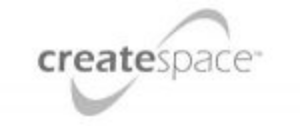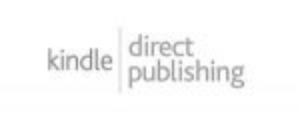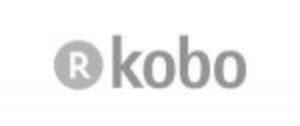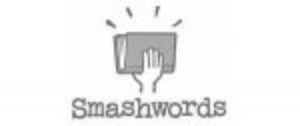
So, you’ve finished writing your book—congratulations! Now comes the next big question: How do you get it into the hands of readers?
For decades, traditional publishing was the only way to see your book on shelves. But today, self-publishing has opened doors for countless authors who want more control, faster results, and higher royalties. Both paths have their pros and cons, and the best choice depends on your goals, budget, and patience.
In this post, we’ll break down the key differences between self-publishing and traditional publishing—not just in terms of money and time, but also in terms of creative freedom, marketing, and long-term success. Whether you’re a first-time author or someone exploring new options, this guide will help you make an informed decision.
Need expert guidance? Fleck Publisher offers professional publishing services tailored to your needs.
Traditional Publishing – The Classic Route
How It Works
Traditional publishing is what most people think of when they imagine becoming an author. You write a manuscript, find a literary agent, and—if you’re lucky—land a deal with a publishing house. The publisher then takes care of editing, cover design, printing, distribution, and marketing. In return, you receive an advance (a one-time payment) and royalties (a percentage of each book sold).
But here’s the catch: Getting a traditional publishing deal is tough. Publishers receive thousands of submissions every year, and only a small fraction make it to print.
The Upside of Traditional Publishing
- No Upfront Costs: The publisher covers editing, design, printing, and marketing.
- Prestige and Credibility: A book from a well-known publisher often carries more weight with readers and critics.
- Wide Distribution: Your book can end up in major bookstores, libraries, and even international markets.
- Professional Support: You get a team of editors, designers, and marketers working on your book.
The Downside of Traditional Publishing
- Extremely Competitive: Even talented writers face rejection. Some bestselling authors, like Harry Potter’s J.K. Rowling, were rejected multiple times before finding success.
- Less Creative Control: Publishers may ask for changes to your manuscript, cover design, or even the title to fit market trends.
- Slow Process: From submission to book release, it can take 1-2 years (or longer).
- Lower Royalties: Authors typically earn 5-15% per book sold, which means you need to sell a lot to make a living.
Self-Publishing – The Modern Author’s Choice
How It Works
Self-publishing puts you in the driver’s seat. You write the book, hire editors and designers, and publish it yourself. You keep full control over your work and earn higher royalties, but you also handle (or pay for) everything—editing, cover design, marketing, and distribution.
The Upside of Self-Publishing
- Full Creative Control: You decide everything—from the story to the cover to the release date.
- Faster Publication: Your book can be live in weeks or months, not years.
- Higher Royalties: You earn 35-70% per sale, compared to the 5-15% in traditional publishing.
- No Gatekeepers: You don’t need an agent or publisher’s approval. If you’ve written a book, you can publish it.
The Downside of Self-Publishing
- Upfront Costs: Editing, cover design, and marketing can add up. (Though you can do some yourself to save money.)
- Marketing Falls on You: Unlike traditional publishing, no one is handing you a marketing plan. You’ll need to build an audience through social media, email lists, ads, and word-of-mouth.
- Less Prestige (For Now): Some readers still assume self-published books are lower quality—but this is changing fast.
Which One Is Right for You?
There’s no one-size-fits-all answer, but here are some questions to help you decide:
1. How Much Control Do You Want?
If you’re attached to your story exactly as it is—no changes, no compromises. Self-publishing gives you that freedom. Traditional publishers often request edits to fit market trends.
2. How Fast Do You Want Your Book Out?
If you’re eager to share your work with the world, self-publishing lets you publish in months (or even weeks). Traditional publishing moves at a snail’s pace.
3. Do You Have a Budget for Publishing?
Self-publishing requires investment for editing, cover design, and marketing, and it can cost anywhere from a few hundred to a few thousand dollars. If you don’t have the funds, traditional publishing might be the way to go.
4. Are You Willing to Market Your Book?
In self-publishing, marketing is 100% on you. If the idea of running ads, building a social media following, or reaching out to bloggers sounds overwhelming, traditional publishing offers more support.
5. Do You Dream of Seeing Your Book in Bookstores?
Traditional publishers have the connections to get your book into physical stores. Self-published books mostly sell online, though some authors do get into bookstores with persistence.
Real-Life Success Stories
Traditional Publishing “The Cinderella Story”
J.K. Rowling’s Harry Potter and the Philosopher’s Stone was rejected by 12 publishers before Bloomsbury took a chance on it. Today, it’s one of the best-selling book series in history. This is the dream of traditional publishing—getting “discovered” and becoming a household name.
Self-Publishing “The Underdog Victory”
Andy Weir’s The Martian started as a free serial on his blog. After gaining a following, he self-published it on Amazon for $0.99. The book became a sensation, was picked up by a traditional publisher, and later turned into a blockbuster movie. Weir’s story shows how self-publishing can launch a career—without waiting for a publisher’s approval.
Debunking Common Publishing Myths
Myth 1: “Traditional Publishing Guarantees Success”
Not true. Many traditionally published books sell poorly. Publishers invest more in authors they believe will sell, so unless you’re already a big name, don’t expect a massive marketing push.
Myth 2: “Self-Publishing Is Only for Amateur Writers”
False. Many successful authors, like Amanda Hocking (who sold over a million copies of her self-published books) and Hugh Howey (Wool series), prove that self-publishing can be just as professional—and profitable—as traditional publishing.
Myth 3: “Self-Published Books Are Low Quality”
Not anymore. With professional editing and design, self-published books can rival traditionally published ones. Readers care about great storytelling, not just who published the book.
The Future of Publishing: What’s Changing?
The publishing world isn’t as black-and-white as it used to be. More authors are exploring hybrid publishing—a mix of traditional and self-publishing. Some start with self-publishing to build an audience, then land traditional deals. Others use traditional publishing for print and self-publish e-books to maximize earnings.
One thing is clear: The power is shifting to authors. Whether you choose self-publishing or traditional publishing, the key to success is writing a great book and connecting with readers.
Final Thoughts
There’s no “right” or “wrong” way to publish—only what’s right for you. If you value creative control and speed, self-publishing is a fantastic option. If you prefer the support and prestige of a traditional publisher, that’s a valid choice too.
Remember: The most important thing is to get your book out into the world. Don’t let the fear of choosing the “wrong” path stop you. Many authors have succeeded both ways.






